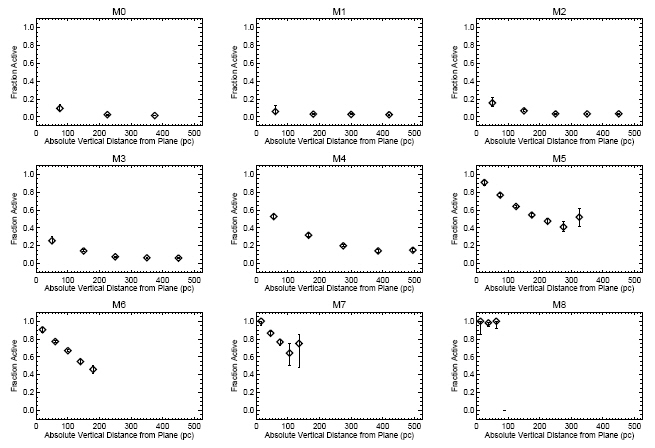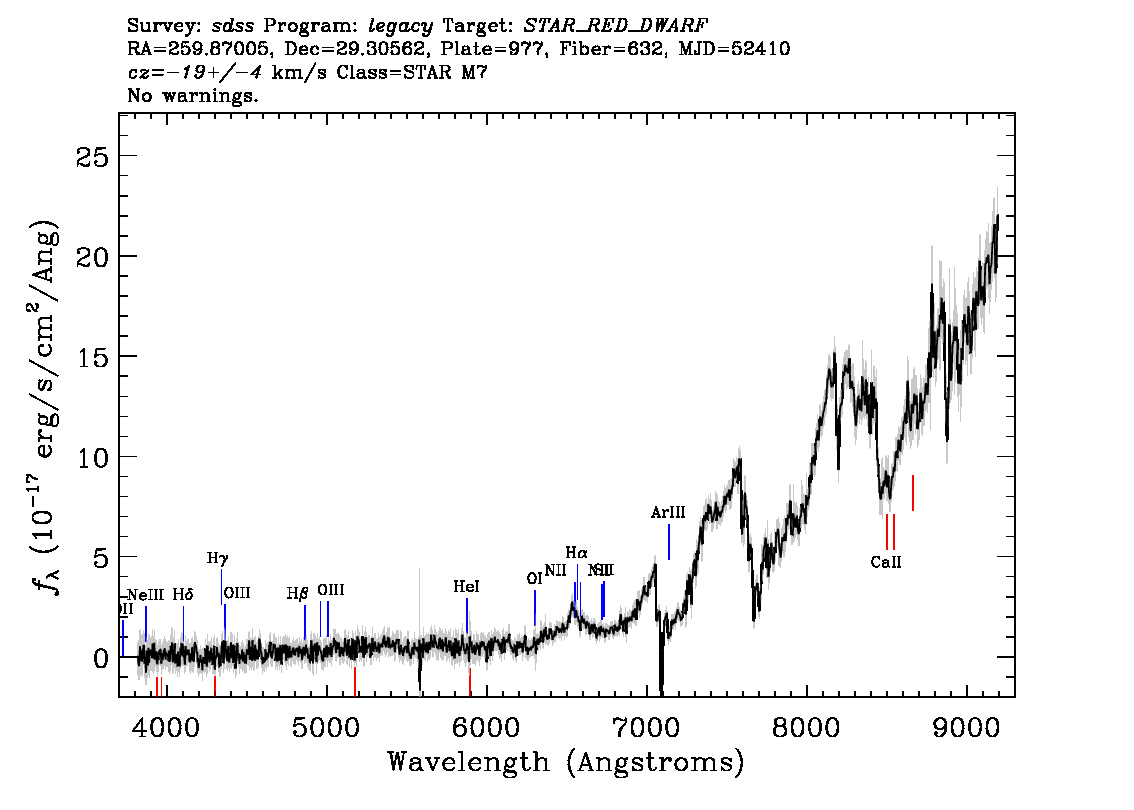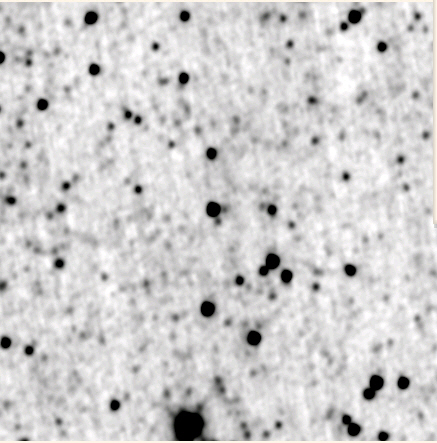
BACKGROUND
Late M dwarfs stars are far more active than early (M1 to M4) dwarfs (West et al, 2007) and so are of more interest to the variable star astronomer. The same paper describes how the different sub-types of M dwarfs can be identified using Sloan Digital Sky Survey (SDSS) photometry and the team also generated a Vizier based list derived from the SDSS data release 5 that includes a spectroscopic analysis of over 38,000 of these stars.

Examples of the spectrum of an active and of an inactive star are shown below.
 |
 |
| Showing activity in hydrogen alpha | No activity in hydrogen alpha |
METHOD
Data for all the M6 or later red dwarfs from SDSS that have spectra was downloaded - (http://skyservice.pha.jhu.edu/casjobs/) - with both criteria (r-i > 2 and (i-z) > 1.1) having to be "passed" before further analysis was done on the star. It is important to appreciate that this download was based on a later data release than that used by West so his discoveries have been cross referenced against the expanded list. The absolute magnitude and hence distance was calculated for all these stars.
The astrometric data from the previous stage was then used as an input file for the WISE database. The most significant result from this was the observation that even the coolest of the red dwarf stars (M9) do not radiate enough energy in either the W3 or W4 wavelengths to generate a signal with a signal-to-noise ratio of >10. So point sources, especially point sources with significant proper motion, must be even cooler "stars" than these M9 red dwarfs.
| WISE BAND | NUMBER (AND %) WHERE SNR AT LEAST 10 |
| W1 | 3914/3921 (99.8%) |
| W2 | 3237/3921 (82.6%) |
| W3 | 13/3921 (0.3%) |
| W4 | 2/3921 (<0.1%) |
 |
 |
| W1 | W2 |
 |
 |
| W3 | W4 |
This looks like a valuable diagnostic test for stars that are cooler than late red dwarfs - if a point source with a W1 image with a SNR > 10 also has a W3 and W4 image with a SNR <10 or NULL then it should be investigated as a matter of urgency.
RESULTS
Download full details of the late M dwarfs with SDSS spectra
Download full details of late M dwarfs in the WISE database
PRIMARY PAPER
Constraining the Age-Activity Relation for Cool Stars: The SDSS DR5 Low-Mass Star Spectroscopic Sample (West et al 2007)- Link
SECONDARY PAPERS
Discovery of the first wide L dwarf + giant binary system and eight other ultra-cool dwarfs in The Sloan Digital Sky Survey Data Release 7 M Dwarf Spectroscopic Catalog (West et al 2010) - Link
Determining the Metallicity of Low-Mass Stars and Brown Dwarfs: Tools for Probing Fundamental Stellar Astrophysics, Tracing Chemical Evolution of the Milky Way and Identifying the Hosts of Extrasolar Planets (West et al 2011) - Link
The Sloan Digital Sky Survey Data Release 7 Spectroscopic M Dwarf Catalog I: Data (West et al 2011) - Link
Discovery of the first wide L dwarf + giant binary system and eight other ultra-cool dwarfs in wide binaries (Zhang et al 2010)- Link
WIKIPEDIA LINKS
SDSS LINKS
The Hertzsprung-Russell Diagram
Over the last few years I have carried out many astronomical data mining or data analysis projects. Most remain unpublished and this series of papers aims to put them all into the public domain. I welcome constructive feedback from readers and encourage colleagues to take the work forward, perhaps as far as peer reviewed publication. I can be contacted by email. and this address is monitored daily.
Martin Piers Nicholson - Shropshire, United Kingdom.
This page was last updated on July 26th 2011.